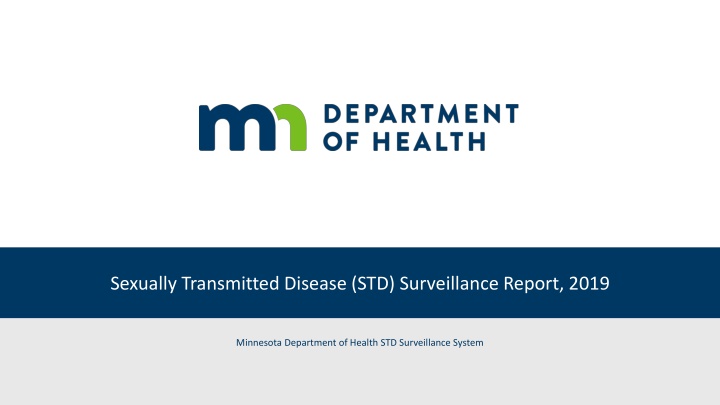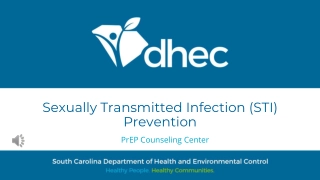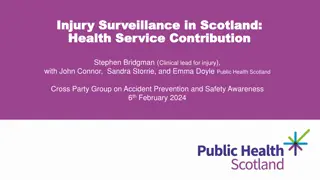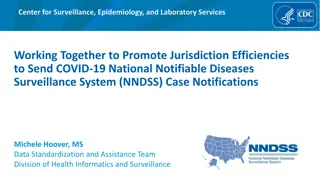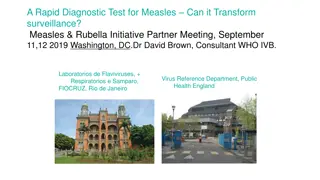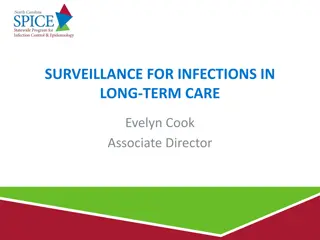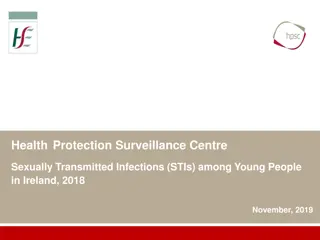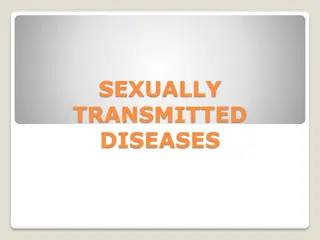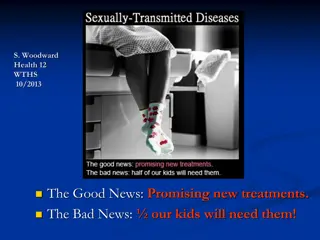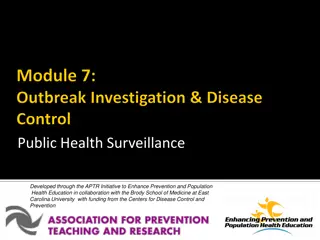Sexually Transmitted Disease (STD) Surveillance Report, 2019
This report provides detailed data on sexually transmitted diseases (STDs) in Minnesota for the year 2019, including the number of cases reported, rates per 100,000 population, and specific information on Chlamydia, Gonorrhea, Syphilis, and Chancroid cases. It also includes statistics on Syphilis rates by stage of diagnosis, primary & secondary Syphilis rates by county, and more.
Download Presentation

Please find below an Image/Link to download the presentation.
The content on the website is provided AS IS for your information and personal use only. It may not be sold, licensed, or shared on other websites without obtaining consent from the author.If you encounter any issues during the download, it is possible that the publisher has removed the file from their server.
You are allowed to download the files provided on this website for personal or commercial use, subject to the condition that they are used lawfully. All files are the property of their respective owners.
The content on the website is provided AS IS for your information and personal use only. It may not be sold, licensed, or shared on other websites without obtaining consent from the author.
E N D
Presentation Transcript
Sexually Transmitted Disease (STD) Surveillance Report, 2019 Minnesota Department of Health STD Surveillance System
STDs in Minnesota Rate per 100,000 by Year of Diagnosis, 2009-2019
STDs in Minnesota: Number of Cases Reported in 2019 Total of 32,983 STD cases reported to MDH in 2019: 24,535 Chlamydia cases 8,063 Gonorrhea cases 1,127 Syphilis cases (all stages) 0 Chancroid cases
Syphilis Minnesota Department of Health STD Surveillance System
2019 Minnesota Primary & Secondary Syphilis Rates by County 6
Age-Specific Primary & Secondary Syphilis Rates by Gender, Minnesota, 2019 7
Primary & Secondary Syphilis Rates by Race/Ethnicity Minnesota, 2009-2019 9
Early Syphilis by Gender and Sexual Behavior Minnesota, 2009- 2019 9
Early Syphilis Cases Among MSM by Age Minnesota, 2019 (n=396) 10
Early Syphilis (ES) Cases Co-infected with HIV, 2009-2019 11
Early Syphilis Infections in Women in Minnesota by Residence at Diagnosis, 2019 13
Early Syphilis Cases in Females by Race Minnesota, 2019
Congenital Syphilis Rates among infants Minnesota, 2009-2019 15
Chlamydia Minnesota Department of Health STD Surveillance System
Chlamydia in Minnesota Rate per 100,000 by Year of Diagnosis, 2009-2019
Age-Specific Chlamydia Rates by Gender Minnesota, 2019
Chlamydia Rates by Race/Ethnicity Minnesota, 2009-2019
Gonorrhea Minnesota Department of Health STD Surveillance System
Gonorrhea in Minnesota Rate per 100,000 by Year of Diagnosis, 2009-2019
Gonorrhea Rates by Race/Ethnicity Minnesota, 2009-2019
Gonorrhea is a notifiable condition in MN Please remember to notify all patients after any STD diagnosis that their name and information is required by law to be reported to the Minnesota Department of Health. Please ensure all STD case and lab reports are submitted to the MDH with proper contact information, including telephone number. Please inform your patients, after a STD diagnosis, that they have a chance of being contacted by the MDH for additional follow up.
Summary of STD Trends in Minnesota From 2009-2019, the chlamydia rate increased by 70%. The rate of gonorrhea increased by 245%. The rates of primary and secondary syphilis have increased 32% compared to 2018. Minnesota has seen a resurgence of syphilis over the past decade, with men who have sex with men and those co-infected with HIV being especially impacted. However, the number of females is at the record high for the last decade. Persons of color continue to be disproportionately affected by STDs. STD rates are generally highest in the metro. However, chlamydia continues to be reported from every county in 2019. Between 2018 and 2019, early syphilis cases increased by 30%. Men who have sex with men comprised 76% of all male cases in 2019; cases among women are continuing to rise. 27
Future Updates to STD Reporting and Current Follow-Up The case report form (available online) can be filled out and mailed or faxed into MDH All cases co-infected with Early Syphilis will continue to be assigned to MDH Partner Services for follow-up All STD cases continue to have the potential for being contacted by MDH for additional follow-up Statewide STD outbreak surveillance continues to be conducted on a monthly basis. Starting in 2020, the STD outbreak detection methodology is being updated. The new response plan improves our abilities to identify and respond to impacted communities in more real time. Look for supportive documentation to be posted on our website in Fall of 2020. 28
Thank you To speak to someone regarding STD surveillance, please call 651-201-5414 For data requests, please visit the STD/HIV/TB Data and Presentation Request Form (https://survey.vovici.com/se/56206EE3662437AB)
